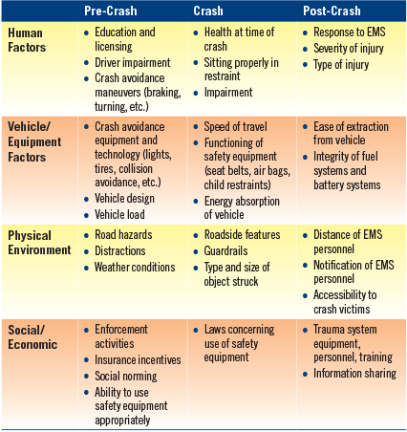A New Approach to Gun Violence
A doctor’s prescription: treat intentional firearm deaths as a public health issue

How is an active shooter like a car crash?
In the 1960s, an alarming increase in deaths related to car crashes led to the development of a new discipline in public health – injury prevention. This approach proved to be very successful and since has been applied to understanding the causal chains of a wide range of injuries, such as drownings and falls among the elderly.
However, efforts to address firearm injury and firearm violence have not been approached as a population-based public health issue, but have instead become mired in a debate about personal liberty and the Second Amendment. In general, this debate has not been productive and firearm death rates in the U.S. are increasing. Following the recent series of horrific mass shootings, time is of the essence, and we need new thinking and new approaches to prevent the next one.
Injury and deaths from guns are complex areas when taken as a totality. There are three main types of firearm injury: suicide, unintentional injury and intentional interpersonal violence.
Intentional interpersonal violence, which is what we are talking about here, covers homicide, mass shootings and intimate partner violence. Each area desperately needs and deserves its own study, funding and action. In addressing the specific area of intentional gun violence, we can leave responsible gun ownership and the rights of those gun owners aside, and focus on the broad-based support to stop intentional gun violence. Surely, we can agree that we must take action to save innocent lives without delay, and without repeating the ineffective arguments and polarizing rationales again and again that lead us to a stalemate.
Could the approach used to successfully reduce mortality rates from car crashes provide a non-political, inclusive way forward to save lives from intentional gun violence?
Three Key Steps
The public health injury prevention approach rests on three key steps:
· Determining the specific injury to be addressed
· Identifying possible interventions to address the injury at three points and across three contexts. This information is commonly put into a matrix, referred to as the Haddon matrix. The top columns are the host (people), the agent (gun), and the environment (both social and physical) and the interventions are categorized as pre-event, event or post-event. An example of a Haddon matrix for car crashes can be seen in the accompanying chart.
· Analyzing data to support the development of action plans and funding sources for the appropriate agencies/legislators/communities or others to tackle priority areas
If we consider the use of this model in reducing car crash fatalities, we see that
· A new question was being addressed. The purpose was not to narrowly make cars safer, or to train safer drivers, but rather to reduce deaths from car crashes. Implicit in this question was that despite on-going largely ineffective efforts to change driver behavior, car crashes would continue to occur.
· By asking the question of how to reduce deaths, the broader areas of highway safety and the emergency medical system were included in the thinking.
· Data was available to support the institution of seat belt laws, development of air bags, regrading of highways, removal of trees and signage along highways, replacement of guard rails that cut through cars on impact with collapsible ones, retooling of the emergency medical response to ensue as many victims as possible were treated within the “golden hour,” and more. Data also was used to avoid programs and policies that were known to be ineffective, or implausible.
Communication Gaps
If we were to analyze the recent mass shootings, we would find numerous areas in which actions could be taken that do not depend on bridging the current political divide. For example: enhanced training of responders so that the incident commander has full awareness of the event; funding universal access to affordable mental health prevention and treatment; addressing communication gaps within schools; and victim triage and tracking systems to ensure the greatest number of lives saved when there are injured survivors.
These are just a few of many actions that could save lives and reduce suffering while we work to tackle the more difficult aspects. And perhaps, by taking action to prevent intentional gun violence, we will find that we agree more than we disagree on the more complicated issues. The worst thing we can do is to stand still.
Having lived through massive societal transformations such as reductions in littering, changes in cigarette smoking, and public compliance with recycling, I know that these changes take time. They require population-based programs (such as PSAs), private and public funding, and legislation. I remain certain that we can find enough areas on which there is agreement to reduce the harm from intentional gun violence.
Dr. Lisa Stone is a public health consultant with experience in public health policy, planning and programs for nonprofit and governmental health agencies. She has worked at the local, state, national and international level in pandemic and emergency preparedness and response.